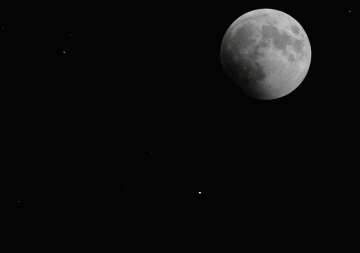 The space shuttle flies in April. Would you like a call when it soars over your backyard? Spaceweather PHONE!
The space shuttle flies in April. Would you like a call when it soars over your backyard? Spaceweather PHONE!
AURORA WATCH: People from Scandinavia to Alaska should be alert for auroras tonight and tomorrow. A solar wind stream is expected to hit Earth, possibly causing geomagnetic storms at high latitudes.
WEEKEND SUN: The weekend began with a blank, quiet sun--then a spectacular cloud of glowing hydrogen rose over the sun's eastern limb. "It was one of the most beautiful prominences we've had in a while," says Greg Piepol who took this picture yesterday from his backyard in Rockville, Maryland:

Prominences on the sun--the view through a Coronado SolarMax90.
The surging prominence reminded photographer Gary Palmer of a giant tsunami, big enough to swallow our entire planet. Observing from a mountaintop near Los Angeles, he created a must-see movie of the wave in action: click here (7MB).
The prominence is dispersing today, but others are popping up around the sun. If you have a solar telescope, take a look.
EARTH'S SHADOW: On March 3rd, the full Moon moved through the shadow of Earth, producing a total lunar eclipse witnessed by millions. In Antalya, Turkey, celebrated astrophotographer Tunç Tezel took as many pictures as he could and combined them to make this 3-hour 45-minute movie:

Photo details: Canon 300D, Meade 8" LX10, ISO 100, 1/250s to 20s exposures
His movie reveals the anatomy of Earth's shadow: There's a pale-white circumference (the penumbra), a deep-red core (the umbra), and in between the two a hint of turquoise.
The red is understood. Sunlight is bent into Earth's shadow by means of refraction in our planet's atmosphere. The bent light is reddened by the scattering action of air, dust and pollution.
The turquoise, however, is a bit of a mystery. One theory holds that it is caused by ozone. Dr. Richard Keen of the Atmospheric and Oceanic Sciences Department, University of Colorado, explains: "Most of the light illuminating the eclipsed Moon passes through the stratosphere, and is reddened by scattering. However, light passing through the upper stratosphere penetrates the ozone layer, which absorbs red visible light and actually makes the passing light ray bluer!" This can be seen, he says, as a blue-green fringe around the red core of Earth's shadow.
The next chance to spy the "ozone fringe" is Aug. 28th. Mark your calendar!
March 3rd Lunar Eclipse Gallery
[astronomy alerts] [night-sky cameras]

